Astrophotography has really taken off as a genre in the last few years.
Never before in history have so many photographers pointed their lenses towards the night sky, nor with such impressive results!
But in order to do a good job of astrophotography, you really need to have the right tools.
And priority number one is going to be getting your hands on some great glass.
What are the best Canon RF lenses for astrophotography, and how do you choose between the different options?
In this article, I rank what I believe to be the best Canon RF lenses for astrophotography currently available.
Assessing their respective pros and cons, so that you can decide which solution will work best for you.
Let me start by saying that there are a couple of quirks that make the Rokinon RF 14mm f/2.8 UMC less than ideal for a number of photographic uses.
As it happens, though, none of those uses are astrophotography.
Indeed, for those with their cameras permanently pointed at the night sky, this is a truly fantastic piece of kit.
And one that comes at a great price, too.
For a start, 14mm is extremely wide. And when it comes to astrophotography, that’s usually a major advantage.
Secondly, while f/2.8 is by no means the fastest lens aperture on offer here, it’s fast enough.
As with most camera equipment, there’s a degree of compromise involved in choosing the best RF lens for astrophotography.
You can have a faster lens than the Rokinon 14mm if you want, but you’ll lose many of the advantages that this great piece of glass offers for night sky photography.
And in order to enjoy those advantages, I believe that the slightly slower maximum aperture is a price well worth paying.
What are those advantages?
Well, one of the most significant is that this lens is manual focus only. To photographers accustomed to shooting other genres, that may not sound like much of an advantage.
But as it makes for more precise focus adjustment, it’s music to an astrophotographer’s ears.
On top of which, the barrel features a super smooth manual focus ring, making operation a real pleasure.
Then there are the optics. The prime lens manages to produces images that are sharp and contrasty, both at the corners as well as at the center of the frame – even when shooting at f/2.8.
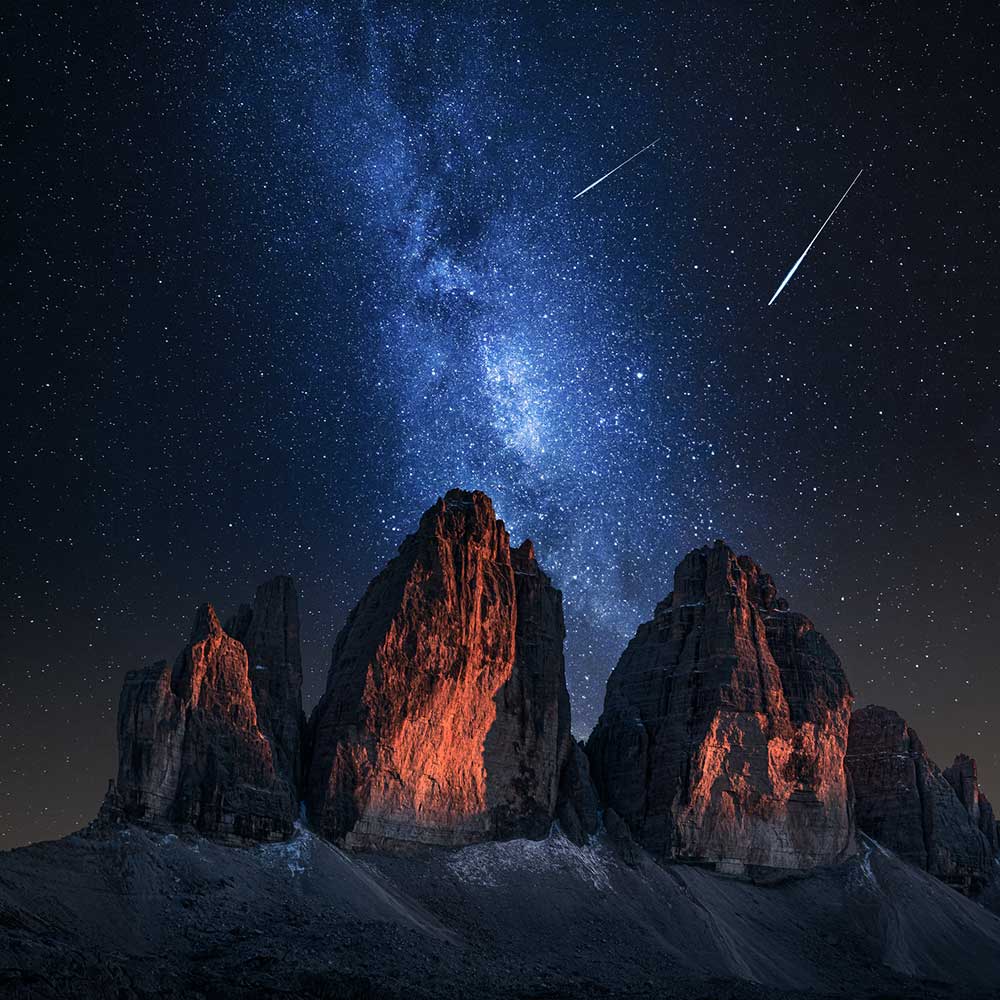
There’s also a degree of improvement in this department as you stop down. But not a lot, simply because image quality is already so excellent wide open.
Of course, getting beautifully sharp star-trails is super important, but it’s also essential that your heavenly bodies are free from comatic distortion, too; an optical error in which pinpoints of light appear to have been “smeared” by the lens.
And thankfully coma is very well controlled here, making the Rokinon uniquely suited to astrophotography.
The 14mm f/2.8 isn’t entirely lacking in optical defects though.
For example, heavy vignetting and barrel distortion will make this lens less of a hit with architectural and interiors photographers.
But they are not issues of too much concern to astro shooters, and in any case both can easily be fixed at the editing stage.
While we’re focusing on the negatives, it’s worth mentioning that it can be quite hard to track down filters that will fit the front of this lens.
A few exist, but you’ll have to dig hard in the third-party sector to unearth them.
Of more concern, though, is that some users have reported quality control issues with Rokinon/Samyang products in general.
So if you do find that your new lens doesn’t live up to expectations, don’t hesitate to ask for a replacement, as duds are apparently not uncommon.
Depending on the market you’re in, these lenses have until fairly recently been available either branded as Samyang or Rokinon.
However, for reasons known only to the manufacturers, the Canon RF models will no longer be available under the Samyang name. But thankfully the exact same products can still be found marketed as Rokinon.
Like the sound of this lens but can’t contemplate life without autofocus? Well, you’re in luck (kind of), because the same lens now also comes in an AF version Although it will cost you a lot more.
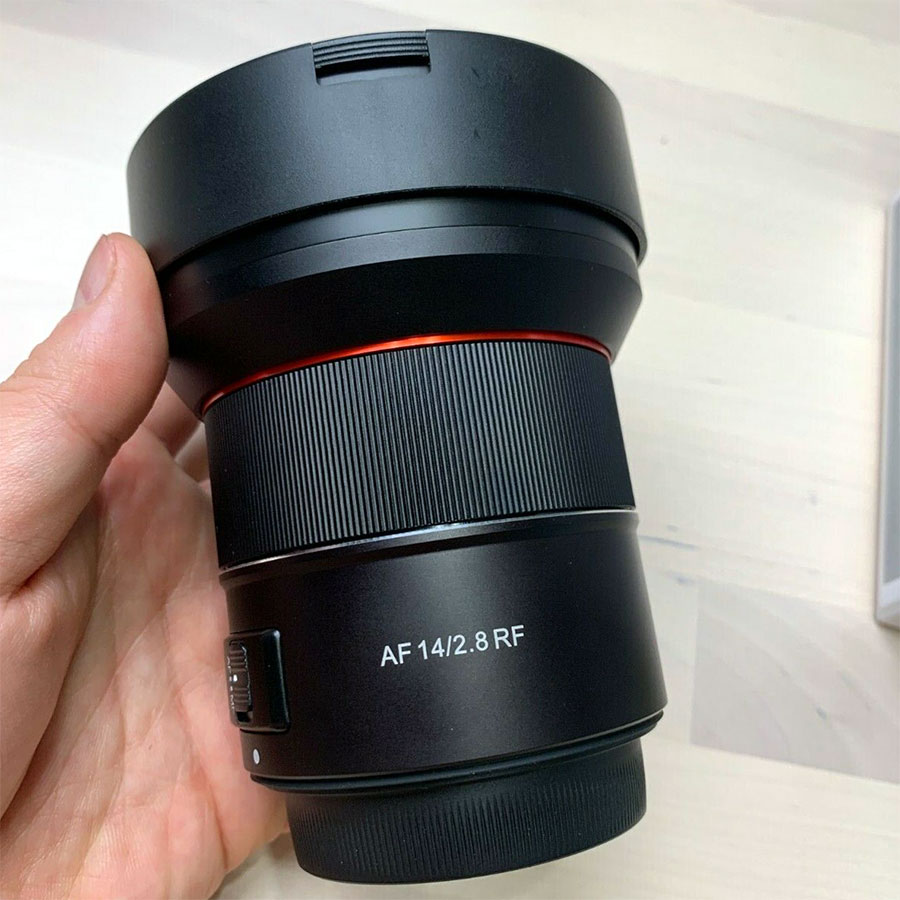
However, when I say “kind of” this is because most astrophotographers actually prefer true manual focusing over autofocus.
It tends to be a lot more accurate than the simulated variety offered by AF canon lenses. So if you’re looking for a dedicated astrophotography lens, you’d likely be better off saving your money and sticking to the cheaper “lo-fi” version anyway.
To sum up, some might say that the Rokinon 14mm is one of the best prime lenses you could get for your eos r camera, but it’s also a one trick pony. But if astrophotography is your thing, I say mount this pony and ride!
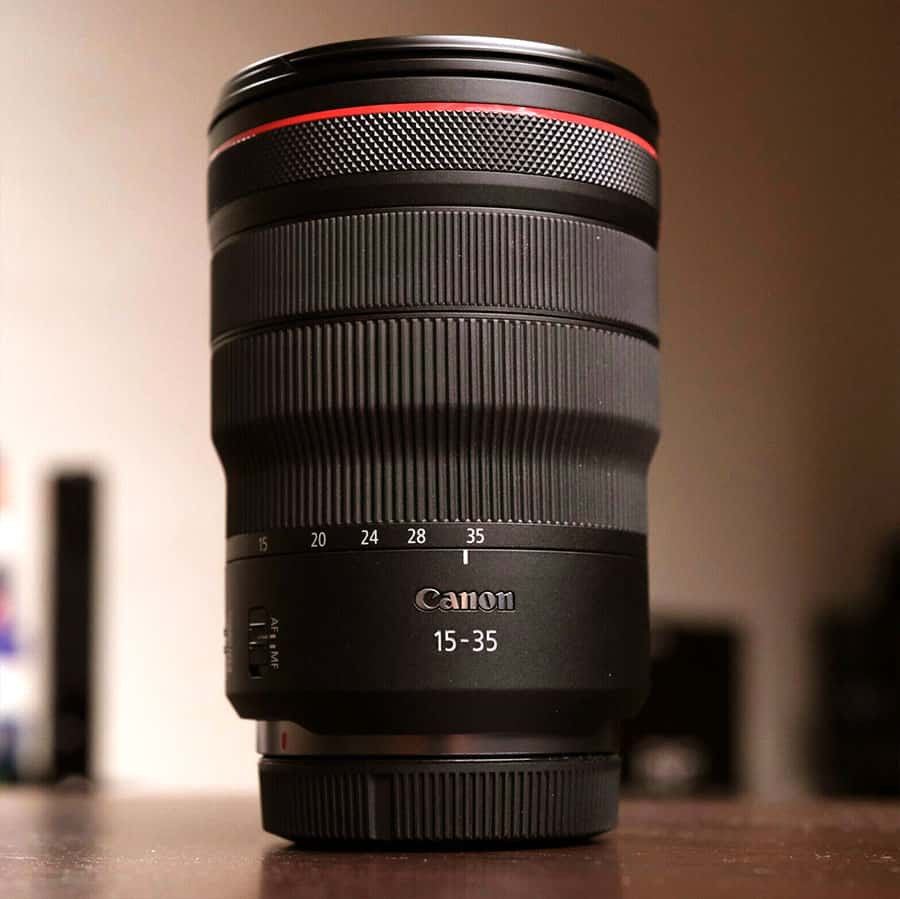
As with pretty much all the native Canon RF lenses, the 15-35mm f/2.8L IS USM is far from cheap.
However, if you plan on shooting astrophotography, yet are adamant that you want to remain fully native on your Canon mirrorless system, right now you have little choice but to find that money.
Indeed, having done my research, I believe that the 15-35mm is your best option from Canon’s current range of RF glass.
It’s not the ultimate astrophotography lens. But it’s without a doubt a very good astrophotography lens.
What could be improved?
Well, there’s no true manual focus for a start. Although to be fair that’s a problem that’s common to the vast majority of mirrorless camera lenses.
True, autofocus works brilliantly. But if you will be using this lens solely for astrophotography, that’s neither here nor there.
More important is the lens’s (simulated) manual focusing system.
This works pretty well – as far as such systems go. Yet naturally it lacks the tactile precision of true mechanical operation. Nonetheless, the slim “manual” focus ring is pleasurable enough to use.
The lens also suffers from some very noticeable vignetting when used at its wider zoom settings; precisely where most astrophotographers will want to spend the majority of their time using it.
Of course, vignetting can be fixed easily enough at the post production stage, and in any case will not be as noticeable on photos of galaxies, stars and constellations as it would on other subjects.
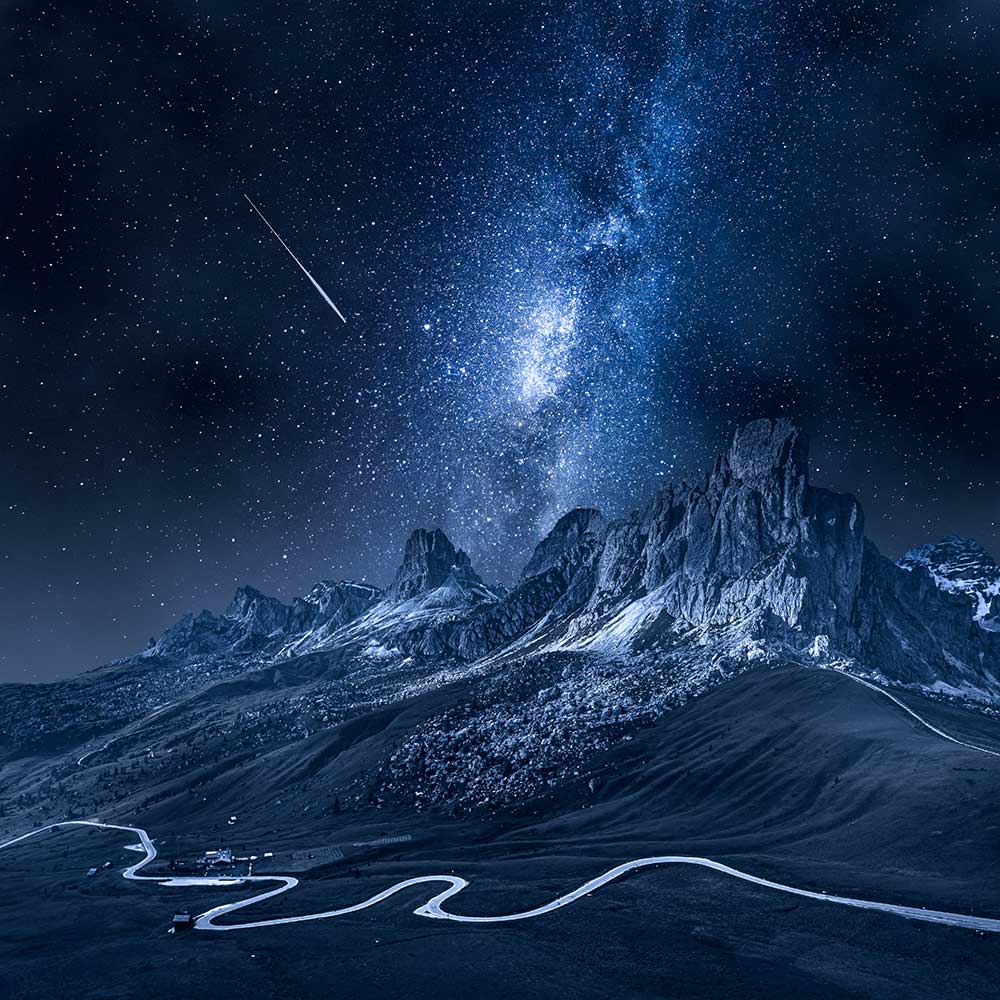
There’s also quite a lot of distortion at the wider focal settings, too.
But again, for astrophotographers this is not the worry it would be for anyone shooting more geometrical subjects.
In terms of image quality, the only real issue of note is that images lack a little contrast and sharpness when focusing on very close subjects.
Although this is hardly a matter of concern for those of us who keep our lenses firmly focused on infinity.
I also need to mention that there is a small amount of comatic distortion visible towards the corners.
But again, not to a worrying degree. And overall the 15-35mm performs very well here.
Which goes a long way towards securing its position close to the top of our list of the best RF lenses for astrophotography.
Other points in the 15-35mm’s favor as an astrophotography lens are that it is consistently sharp across the frame (yes, even in the corners!), and throughout the zoom range. This will make the lens a very attractive proposition for the average stargazing photographer.
It should be noted, however, that contrast lags behind sharpness a little – and the Rokinon 14mm definitely beats the Canon 15-35mm in this department.
The lens is big, sturdy, and solidly built, yet Canon has managed to retain the use of traditional screw-in filters. Albeit in the relatively large (but still readily available) 82mm thread mount.
Finally, the lens comes with very effective image stabilization. So at a pinch you might even be able to pull off shots of the heavens entirely handheld!
Ultimately then, while the lack of true manual focus – and a few other more minor annoyances – somewhat detract from the RF 15-35mm’s astrophotography credentials, it’s without a doubt one of the best night sky lenses available for Canon R bodies. And in my opinion the absolute best among currently available native Canon offerings.
Venus Optics Laowa 15mm f/2 FE Zero-D
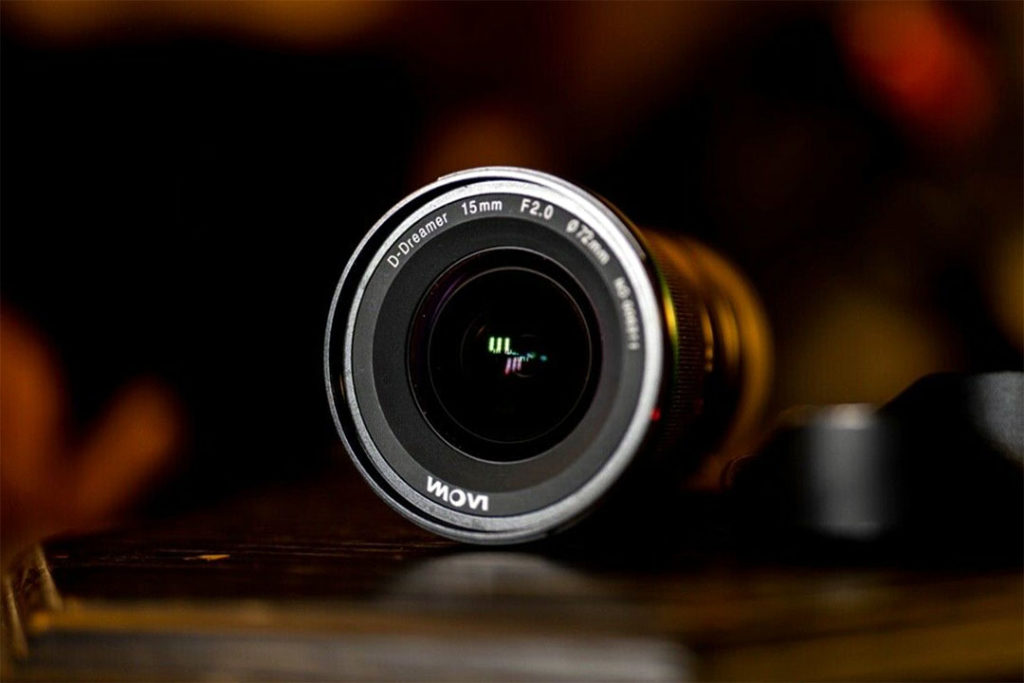
The 15mm f/2 FE Zero-D is part of the premium Laowa line from Chinese manufacturer Venus Optics.
There are many legitimate reasons why Chinese products don’t currently enjoy a fantastic international reputation.
But as the emphasis shifts away from simply producing the cheapest products possible for the global market, there are also an increasing number of exceptions to this rule.
The Laowa line being a prime example.
As case in point, the build quality of the 15mm f/2 is excellent – I mean really good – and overall optical performance very impressive.
And while the lens is certainly not tiny, it can be looked upon as fairly compact and lightweight when you consider just how wide and fast this thing is.
Build quality aside, the main draw here for astrophotography enthusiasts is the Laowa’s enticing combination of a very wide angle of view with a fast maximum aperture and true manual focus.
Effectively the holy trinity for stargazing photographers.
Manual operation is extremely smooth and accurate, and the focus ring features a good degree of damping.
However, not only does this lens offer genuine manual focusing, but it is in fact manual focus only.
So don’t expect it to also double up and serve you for, say, focus-tracked action sports and the like when you’re not shooting the stars.
Used wide open, the lens is fairly sharp. To be sure, it’s by no means the sharpest bit of fast glass I’ve ever reviewed.
But, impressively, it maintains almost the same level of detail in the corners as it does in the center.
With that said, there is a noticeable improvement in terms of both sharpness and contrast when you stop the lens down to f/2.8.
You may be wondering what the he “Zero D” part of the name stands for.
This is “zero distortion.” And they really aren’t joking; there’s almost no barrel distortion whatsoever.
There’s probably even less lens flare, too. Pretty good!
Although to be honest neither are issues that the average astrophotographer loses much sleep over.
Disappointingly from our point of view, however, the 15mm f/2 exhibits a degree of comatic aberration towards the edge of the frame.
To be sure, stars at the center are rendered as crisp pinpoints of light. But those captured nearer the corners show a degree of smearing.
All in all, a very good – but not totally perfect – lens for astrophotography.
Canon RF 24-70mm f/2.8L IS USM
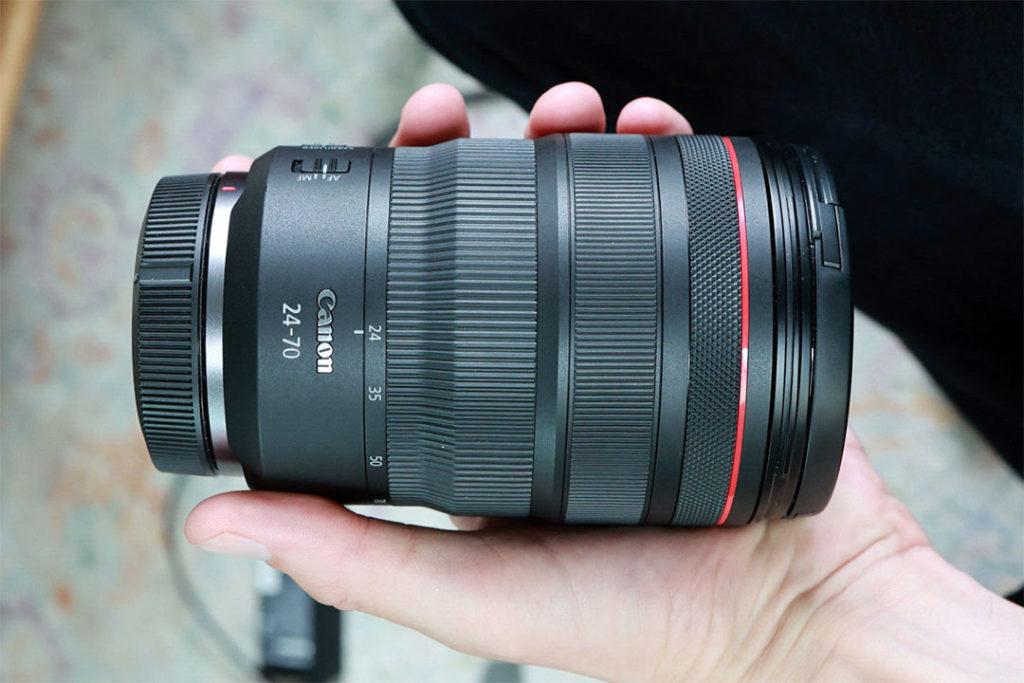
Canon’s RF 24-70mm f/2.8L is part of the brand’s trilogy of workhorse zoom lenses for the R-series cameras. Durable, high performing, and invariably expensive.
The big draw with this lens for astrophotographers is simply that it is very sharp right across the frame. And precisely where it most counts from our point of view; at the 24mm zoom setting.
The lens performs fairly well at other focal lengths as well, but wide is where it really excels.
Just what we want to hear!
Contrast, too, is impressive wide open. Although it improves even more as you close the diaphragm a little further.
There is some heavy vignetting at the widest zoom setting, though. And a degree of barrel distortion.
But nothing that will worry astrophotographers too much. Indeed, as long as you keep the Digital Lens Optimizer and Chromatic Aberration Correction controls on, you shouldn’t see much in the way of unpleasant artifacts at all.
Image stabilization works extremely well. However, while this will of course offer you something of an advantage in your long exposures, you’re likely to be using a tripod for them anyway.
So let’s just say that IS is hardly a first-degree consideration for most astrophotographers.
Still, if you do find yourself having to shoot the night sky without a tripod for whatever reason, the 24-70mm’s image stabilization might just make the difference.
Moving on to build quality, the lens’s very sturdy construction means you can take this thing out on nocturnal expeditions in total confidence.
Even in bad weather; as it comes sealed against the elements. Canon has even added a degree of shock resistance to the barrel too.
While Canon’s eye-detect and subject tracking AF work brilliantly, these are not going to be big selling points where astrophotographers are concerned. Indeed, the very fact that this lens – like all the Canon RF lenses currently available – comes only with autofocus (and a simulated version of manual operation) will be a major turn-off for many night sky shooters.
To sum up, then, at its widest zoom setting this is a moderately wide angle lens that performs well optically at maximum aperture and comes with very effective image stabilization.
And although 24mm won’t be sufficiently extreme for some astrophotographers, it will be plenty wide enough for many.
And if you also plan on using this lens for uses beyond night sky photography, you’ve got all that extra zoom range to play with, too.
In its own right this is a superb lens. One of the best available for the R series. When it comes to shooting astrophotography, however, it’s not the best, but definitely one of the better options available all the same.
Canon RF 28-70mm f/2 L USM
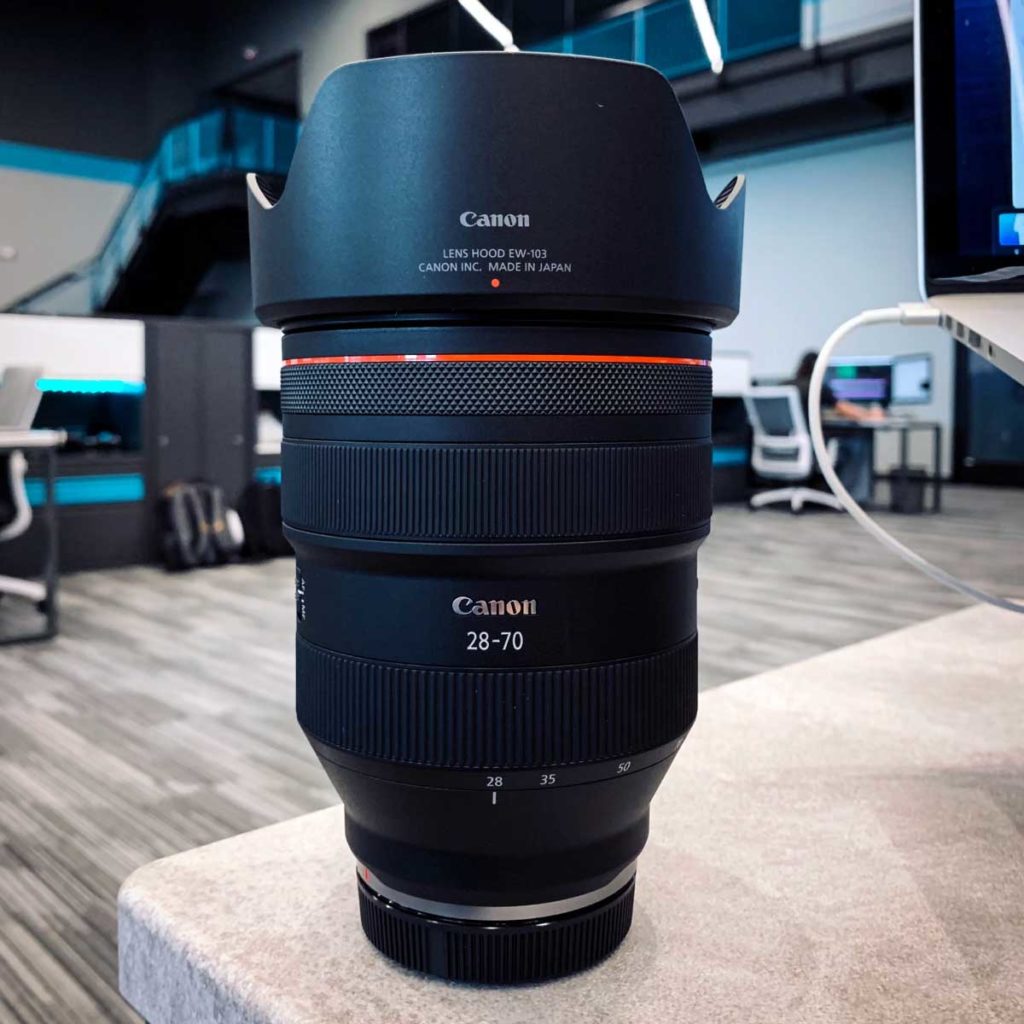
Canon claim that the RF 28-70mm F2L USM “redefines zoom lens image quality,” by offering “the kind of superb image quality you’d expect from a prime lens”.
And yes, while the 28-70mm is not quite as sharp as a wide angle prime, it is nonetheless pretty sharp for a zoom.
And the good news is that it performs its best in this department right where astroshooters want it; at the 28mm setting.
Do expect to see a tiny bit of corner softness even here though.
The 28-70mm is considerably bigger and heavier than the 24-70mm (above).
But this makes sense when you consider that you’re also getting an extra stop of light here.
And many night sky photographers will likely consider the trade-off worthwhile.
On the downside, though, when it comes to astrophotography, there’s a significant jump between 24mm and 28mm in practical shooting terms.
And given the considerable extra premium for this lens, star shooters may actually find they are content enough with the slower, wider glass if it means making a considerable cash saving.
It almost goes without saying that this lens offers incredible autofocus capabilities.
So if you do plan on shooting other genres, you can rest assured that it’s equipped for working in fast paced environments too.
This will be but small consolation to most full-time astrophotographers, however, who would likely have preferred to find fully manual focusing, simply for the greater precision it offers.
Is this an “astrophotography lens”?
No.
Can you use if for astrophotography?
Yes. And a hell of a lot more, too, besides.
Needless to say, though, that if you are looking for a dedicated astrophotography lens, there are several much cheaper and more appropriate solutions available.
Canon RF 35mm f/1.8 MACRO IS STM
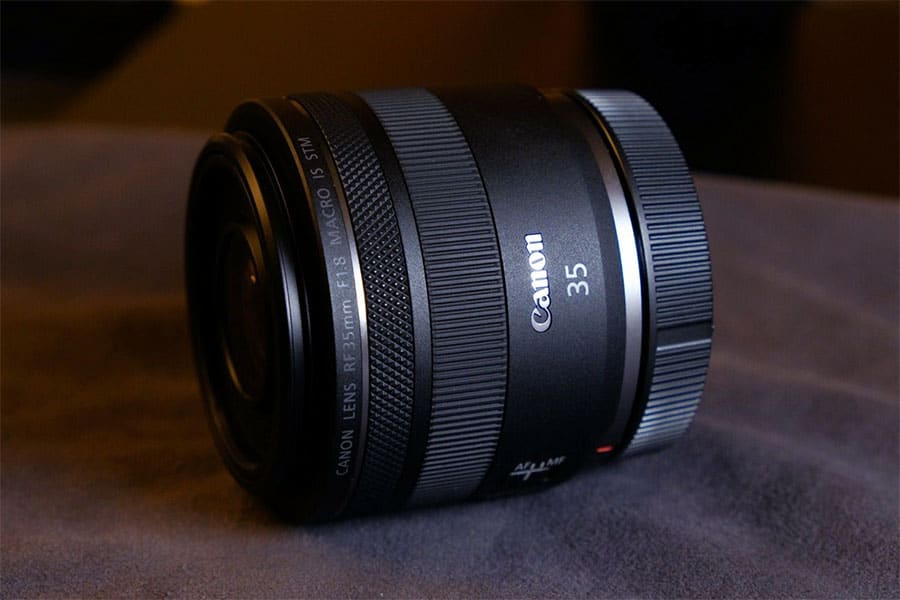
On paper the RF 35mm f/1.8 MACRO looks well suited to shooting astrophotography at a slightly longer focal length.
It’s very fast, it comes with great optical image stabilization, and it’s sharp.
Sadly, though, on closer inspection some of this lens’s appeal turns out to be a little misleading.
To be sure, images made with the 35mm f/1.8 display very good edge-to edge sharpness.
However, image quality is a lot better once the lens has been stopped down a little; something of a disappointment to those of us hoping to make use of its f/1.8 maximum aperture on a regular basis.
Another let-down is that shooting at f/1.8 also produces a noticeable amount of comatic aberration in the corners.
Meaning that any stars in this area will be unattractively blurred by the lens.
Again, this issue improves massively by stopping down the diaphragm even just a little.
But if in the end you’ll need to shoot at f/2.8 or beyond all the time in order to get good results, you may decide that other lenses we look at here offer a more convincing solution for night sky photography.
Additionally, as one of Canon’s native lenses, this is a fully autofocus number that offers a “by wire” simulation of manual focusing.
The system works well enough, yet the focus ring lacks the tactile resistance of true mechanical focus, and making precise micro adjustments will likely be a bit of a chore.
Thankfully Canon does offer the possibility to switch over from regular focusing – in which the speed you turn the ring dictates how far the point of focus moves – to a custom “linear” focusing option.
And thankfully this behaves a lot more like a mechanical lens; in feel, if not totally in effect.
What’s more, as with many of the lenses we look at here, there’s very noticeable vignetting and a degree of barrel distortion.
As already noted, however, these are not major obstacles for the average astrophotographer.
There are thankfully no caveats with the optical image stabilization, though, which works very well indeed.
If we think of the RF 35mm as an f/2.8 or f/4 lens, it can hold its own against some of the better options we look at here.
But in the meantime we’ve lost much of the advantage in terms of light-gathering abilities that made this lens seem so attractive for astrophotographers in the first place.
In short, yes, the RF 35mm f/1.8 will allow you to shoot the night sky, but it’s by no means the best option available for that purpose.
Still, as it’s more affordable than the average Canon RF lens, the 35mm f1.8 MACRO will largely appeal to those interested in dabbling in a little night sky photography, but not yet willing to commit to a dedicated astrophotography lens. And for this it’s undoubtedly well up to the task.
Canon RF 14-35mm f/4L IS USM
In terms of the focal lengths covered, Canon’s new RF 14-35mm f/4L IS USM lens perhaps represents the ultimate in astrophotography zoom lenses.
Covering as it does everything from wide to wider, and then even wider still.
This Ultra-wide zoom is even a degree wider than the existing 15-35mm Canon RF lens that sits at our #2 position above
If you were paying close attention as you read the product name, however, you will have already noticed this lens’s biggest failing from an astroshooter’s point of view: that sluggish f/4 maximum aperture.
True, none of these native RF lenses have what you could call super wide diaphragms.
So it’s probably a good idea to adjust our expectations a little. But f/4 just seems like a stop too far in the direction of sensorial gloom for this ultra wide angle lens to deserve a spot anywhere too high up my list – despite offering astrophotographers some otherwise quite attractive specs.
Aside from the extremely useful focal range, these specs also include great image sharpness from edge-to-edge, and very little in the way of distortion or color aberrations.
The lens is also compact and relatively lightweight – which certainly can’t be said for the 15-35mm f/2.8 – and comes with the same degree of dust and moisture protection as Canon’s other L-line RF lenses.
Image stabilization is also present; not that this will be a priority for most of us however.
Of course the only “manual” focusing option here is Canon’s simulated focus-by-wire system.
Which to be clear is better than many comparable simulated manual focusing solutions, but a far cry from actual mechanical focus in terms of accuracy.
Yes, you could use this lens to shoot astrophotography, comets and asteroids included. And given its lower price I’m sure that many people will do exactly that.
Ultimately, though, it’s made redundant by Canon’s pre-existing 15-35mm offering; which is considerably faster, but only marginally less wide.
Yasuhara Anthy35 35mm f/1.8
The Anthy35 35mm f/1.8 from Japanese lens manufacturers Yasuhara looks – and often behaves – more like a vintage lens than a modern piece of glass.
Great for some uses. Less so for others.
For astrophotographers, this lens offers two principal attractions; three potentially serious no-nos; and perhaps one other specification that won’t be to everyone’s liking but will be fine for many others.
This latter issue is simply that the Anthy35 doesn’t offer a particularly wide field of view, at least as far as astrophotography lenses go.
Which doesn’t mean that it isn’t well suited to astrophotography.
Indeed, at 35mm the lens is well inside what most people would consider the cut-off point of usability for capturing night skies.
And some photographers may even prefer the more selective field of view provided here.
Still, let’s just say that it won’t be every astrophotographer’s favored focal length for this task.
The more serious negative issues we will get to shortly. First, though, let’s look at everything this lens has going for it.
As should be quite clear to readers by now, fast glass is king when it comes to astrophotography.
Long exposure times risk blurred stars, and so a wider aperture provides an opportunity to up the shutter speed while still gathering as much information as possible from the heavens.
Although f/1.8 isn’t earth-shatteringly fast when speaking of camera lenses in general, it’s as fast as you can get for the Canon RF system right now.
Indeed, in terms of a fast wide angle, only Canon’s much more expensive RF 35mm f/1.8 MACRO can match the Anthy.
So far so good.
But when it comes to shooting the heavens, the Anthy35 lightweight lens also has another trick up its sleeve: genuine manual focus.
So while Canon’s 35mm f/1.8 MACRO might be the better lens overall, some astrophotographers may not be able to forgive the simulated “by wire” focusing of the Canon and will instead favor the precision of the Yasuhara. Despite its flaws.
And what are those flaws exactly?
Well, for one the lens exhibits prominent flare.
More seriously, though, it also displays quite a considerable degree of vignetting. Worse still, due to a quirk of the lens when working in tandem with Canon’s sensors, the vignette has a noticeable purple tinge to it.
Not a great look.
Having said this, it’s important not to overreact when I say that the chromatic aberration is quite “noticeable.”
Yes, the color cast would be very evident if photographing a white wall, for example.
But realistically it’s not going to show up much on a night sky (and the vignetting can easily be fixed at the editing stage anyway).
And then there’s image quality. In terms of contrast and sharpness, the lens performs very well at the center.
But in keeping with its retro build, it displays some similarly old-school corner softness at the widest aperture settings. Understandably, this may put off some astroshooters.
True, by f/5.6 any hint of edge softness has gone. But by that point gone too are most night-sky photographers – in search of sharper optics and wider apertures.
What will definitely make night sky photographers think twice, though, is that the lens also produces a noticeable degree of coma towards the edges of the frame.
And it may be this factor alone that pushes the average astrophotographer to seek an alternative solution elsewhere.
All in all, it’s not a perfect lens, but it’s nonetheless a good lens. And one that is in many ways very well suited to astrophotography – as long as you don’t mind dealing with its quite evident quirks.
These issues are doubly frustrating because otherwise the Anthy is such a great little piece of glass for our purposes. And many others besides.
My recommendation would be to avoid this as a dedicated astrophotography lens, only considering it as an option if you also intend to shoot other subjects alongside starscapes.
In which case it will do a very decent job of the task.
Canon RF Mount Astrophotographer's Guide
Choosing the right astrophotography lens is rarely a straightforward affair.
But it’s a task that’s made a lot easier simply by having access to the right knowledge.
Now that we’ve looked at the main contenders for shooting astrophotography with Canon RF cameras, let’s consider in a little more depth precisely what spec makes for a great astrophotography lens, and which features you can probably live without.
Maximum Aperture
As an astrophotographer – essentially a harvester of starlight – nothing is more important to you than getting as much of that light into the lens as quickly possible, so that it doesn’t blur or create motion trails.
Thankfully though, as long as there’s nothing else between the camera and subject, you only need to get infinity in focus.
Unlike traditional landscape photographers who nearly always work stopped down for a deep depth of field, you’ll be fine shooting at the widest aperture setting your lens offers.
This way you can keep exposure times short and freeze that celestial display as ultra sharp pinpoints of light.
The one time that you might want to shut your aperture down to a smaller opening is when also including something in the foreground of the shot – buildings, geographical features, or other environmental elements.
This is because using a very wide aperture is fine when photographing everything on the same plane, billions of miles away, but as soon as other elements enter the frame, nearer the camera, the narrow depth of field created by a wide aperture will throw your foreground elements totally out of focus.
For a greater depth of field, you’ll need to shut the aperture down a little.
But of course any lens you might buy will be perfectly capable of doing this, so it’s not something to worry about in the same way that fast apertures are.
Clearly then, the faster the lens, the better.
The trouble is that fast lenses tend to be more expensive. Worse still, among the already rather limited range of native and third party lenses available for Canon mirrorless cameras, even fewer are genuinely fast.
Alas there’s not a great deal that Canon RF users can do about this.
Choosing a lens is always a question of balancing compromises, and here we just have to accept that the range of truly well suited lenses is rather limited.
In any case, as important as fast aperture is for astrophotography, it’s not the only consideration.
And you’ll need to balance the light gathering abilities of any lens you choose with many of the following points too.
Sharpness
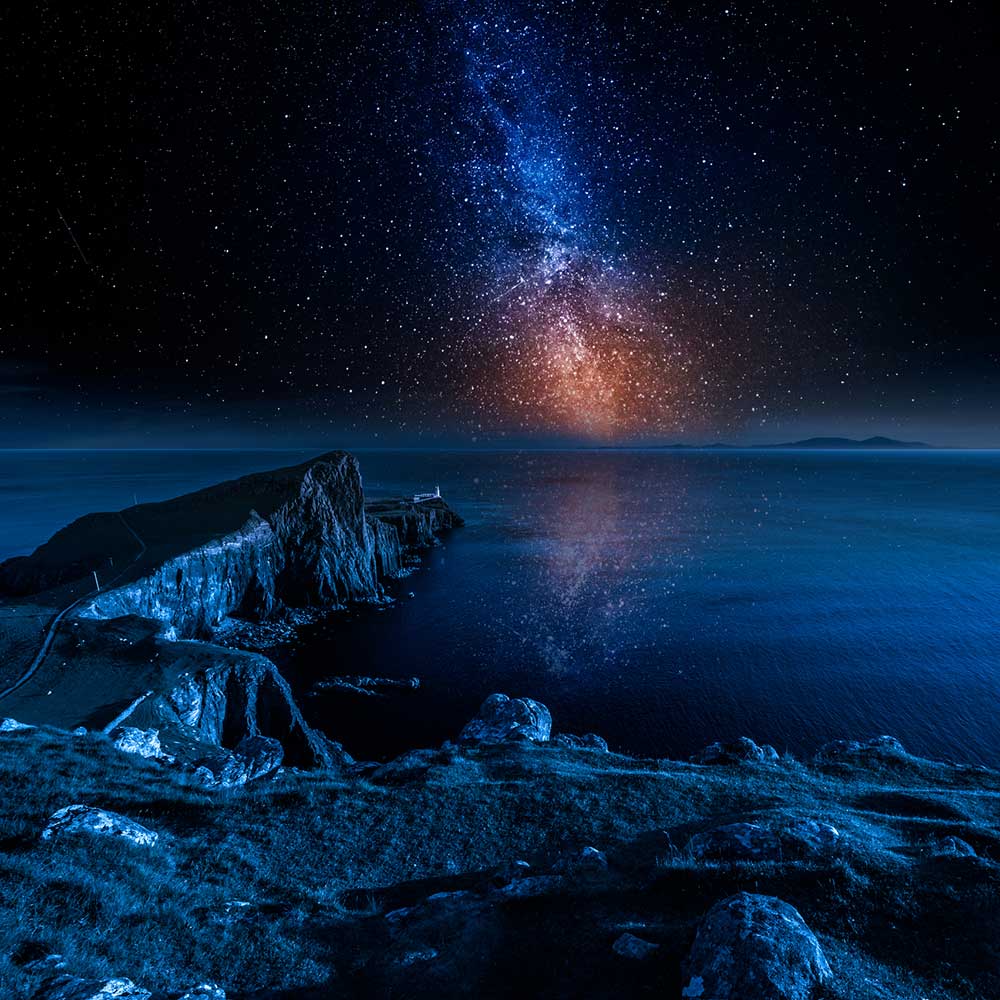
Astrophotography essentially involves capturing minute points of light.
And the better defined those points of light are when they are captured, the better they’ll tend to look once edited.
Clearly, then, lens sharpness is also pretty import for astrophotography.
Thankfully the situation here is a lot better than it is for lens aperture.
While the current range of Canon RF lenses is by no means extensive, there are few – if indeed any – that perform badly in terms of optics.
Indeed, almost all the RF glass exhibits excellent sharpness at the center of the frame.
Even when used wide open. And a surprisingly large number maintain that sharpness most of the way into the corners too.
This is certainly not something that can be said for all Canon’s competitors.
In short, yes, be picky about lens sharpness. But if you will be sticking to Canon’s native lenses, it’s hard to go too wrong on this front.
Meanwhile, many – but not all – of the third party lenses available for Canon mirrorless cameras perform every bit as well as the native Canon ones.
If not in fact better!
Coma and Other Optical Defects
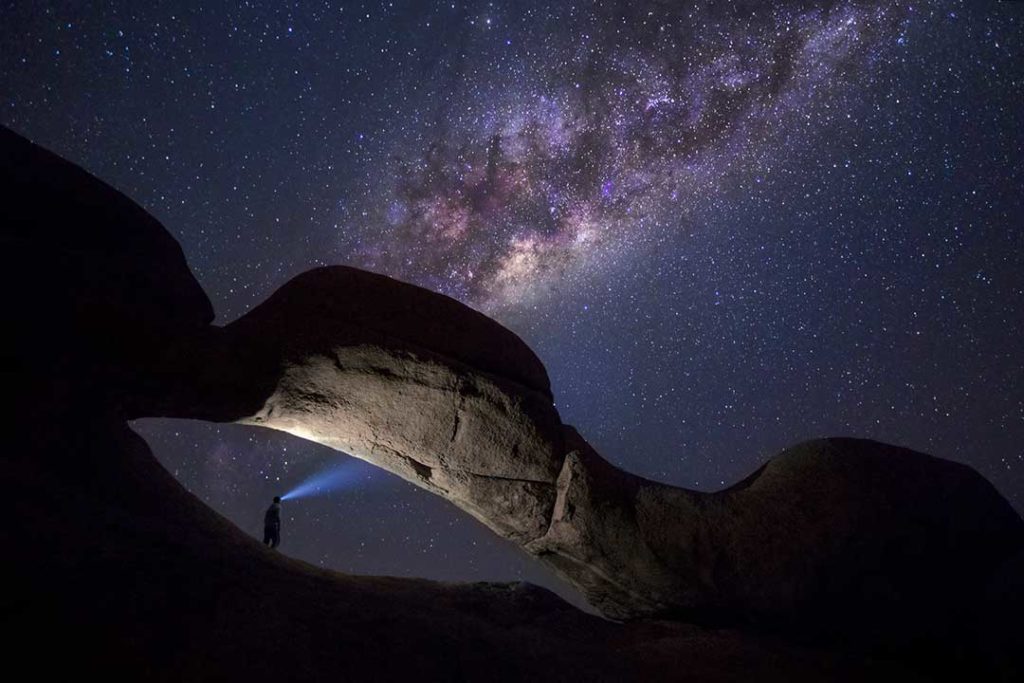
Let’s start by discussing the “other” optical defects first.
What I have in mind here are problems such as barrel and pincushion distortion, flare, vignetting etc.
While these are annoyances that most photographers have to deal with, they will be more of a nuisance for some photographers than others.
At one end of the spectrum we might place photographers shooting landscapes and interiors.
They need their shots to be perfectly squared up, which any distortion will make a mess of.
Meanwhile vignetting will ruin the clean perfection of walls and other flat, light colored expanses.
At the other end of the scale are astrophotographers.
If there’s a little barrel distortion throwing the milky way or meteorites slightly out of line, we’re unlikely to be any the wiser.
True, you might notice a little vignetting on a night sky. But not a lot. And while technically stars are sources of light, they are unlikely to ever be strong enough to cause lens flare.
As a result, you should definitely keep such optical defects in mind when selecting a lens.
But unless you plan on using the same lens for a variety of other photographic genres beyond astrophotography, you can probably forgive a lot of these issues if a particular lens is otherwise well suited to your needs.
In any case, these are problems that are usually simple enough to fix at the editing stage.
Comatic aberration, on the other hand, is a little bit different.
The problem of coma comes about due to misalignment of a lens’s optical elements, causing the rays of light entering the lens to focus imperfectly. The effect is a slight “smearing” of fine detail.
And whereas coma tends not to be all that evident in most other genres of photography, it can be very noticeable when photographing small points of light – such as stars for example.
What should be rendered as perfect pinpoints instead appear as smudged dots with small trails behind them. It’s not especially pretty.
While coma is actually a very common problem for lenses, thankfully it’s an issue that only occurs with off-axis light.
This means that even if a lens suffers from coma, the center will tend to be largely coma-free; with the star trails only becoming apparent as you move toward the edge of the frame.
Still, nobody wants their stars to become a blurry mess at the corners. So a lens that suffers from a lot of coma should definitely be avoided.
Of course, even a badly coma-inflicted lens will tend to clear up once you shut down the diaphragm a few stops.
But given the importance of fast aperture for astrophotography, this will be a far from ideal solution most of the time.
Focal Length
As anyone who has ever shot handheld with a telephoto lens has likely discovered, the longer the lens, the greater the risk of camera shake.
Conversely, you may have noticed that you can get away with handholding a shot down to a much slower shutter speed when using a wide angle lens.
There’s a similar principle at play with focal length in astrophotography too.
However, as you’ll likely be using a tripod, it’s not camera shake we’re worried about here, but star trails caused by the rotation of the earth blurring the sky above.
Clearly then, wide angle lenses offer the astrophotographer a distinct technical advantage.
Which isn’t to say that you can’t produce great night sky photography on a slightly longer lens, but simply that the risk of unwanted star trails increases the longer you go.
Some full frame astrophotographers stick exclusively to ultrawide angle lenses such as those in the 20-14mm range. Others find this just too wide, and prefer something a little longer; such as a 24mm, 28mm, or even a 35mm.
Few will venture beyond this point though. Unless of course they are using what is know as a “tracker”.
This is a device that moves your camera at the same rate as the earth’s rotation, but in the opposite direction; thus locking on to the stars and compensating for the earth’s movement.
Focusing
Most of Canon’s RF lenses boast some pretty impressive autofocus specs. Fast, accurate, and near-silent.
That’s nice.
It doesn’t make much difference to our lives as astrophotographers though.
For astrophotography you’ll pretty much only ever use one focus setting: infinity.
Not only does this mean that clever advances in AF technology such focus tracking or eye-detect technology are of no use to use whatsoever, but the fact that a lens has autofocus at all is actually an inconvenience.
The reason for this is that focusing on infinity can be harder than you might imagine.
Indeed, it’s not always exactly where you’d expect it to be. And the tiniest movement of the focusing mechanism can make the difference between a perfectly focused shot and one that – most annoyingly – is just that little bit soft.
And for precision focusing of this kid, a true manual focus lens will often be a better choice than an autofocus one.
Don’t be fooled by the manual focus ring on an AF lens either. Sure, turning this will move the focus mechanism.
But it’s not you moving the lens elements through mechanical force, but rather the autofocus motors moving them for you.
To where they think you want them to go. But there’s a difference!
Plenty of people shoot astrophotography using AF lenses.
Presumably, though, most of them have yet to experience the greater degree of control afforded by a truly mechanical manual focus lens.
Electronics
Thankfully a number of true manual focus RF lenses are available from third party brands.
For some reason, though, some of these manufacturers have almost gone too far in their pursuit of a lo-fi mechanical experience, in that they’ve done away with the useful side of lens electronics too.
In practice this means that there is often no communication between the camera and lens.
In fact your full frame camera will likely not even know that a lens is attached at all, and changing camera settings such as aperture will have no effect whatsoever. Instead you’ll need to set these manually on the lens itself.
Mostly this isn’t such a big deal for astrophotographers. Just be aware, however, that lack of electronics also means that your photo files will not come with any metadata regarding your lens settings.
Image Stabilization
Effective optical image stabilization is undoubtedly one of the most exciting advances in camera technology of the last decade or so.
However, it’s not one that will make a huge amount of difference to the average astrophotography enthusiast.
For a start, most astrophotography is done using wide – if not ultrawide – angle lenses.
And camera shake tends not to be a huge issue here.
What’s more, you’ll probably be using a tripod to shoot the night sky anyway.
In which case the fact that your lens comes with the latest all-singing-all-dancing developments in image stabilization is neither here nor there.
Buy yourself a lens with impressive IS by all means.
But don’t expect to give it much of a work-out by photographing the Milky Way
Final Thoughts
Astrophotography is a lot of fun, and the results can be spectacular.
But unlike many other genres of photography, where kit lenses or their more expensive relatives will allow you to shoot almost anything you want, astrophotography requires some fairly specialized kit.
For the time being the Canon RF line doesn’t offer a huge range of choices in the astrophotography department, compared with canon ef mount options or nikon lenses.
Thankfully, though, there are a handful of suitable options besides ef lenses.
Although as we’ve just seen, several of the more convincing candidates for use as a dedicated Canon RF astrophotography lens actually come from third party manufacturers.
I realize, however, that not every photographer with an interest in shooting the night sky will want to step away from the native Canon options.
And if you plan on using your astrophotography lens for other purposes, too, manual focus might not be ideal either.
In short, which lens you should go for will depend on your precise needs as a photographer.
But hopefully by reading through my guide to the best Canon RF lenses for astrophotography you are now fully equipped with the knowledge to choose the right tool for the job.

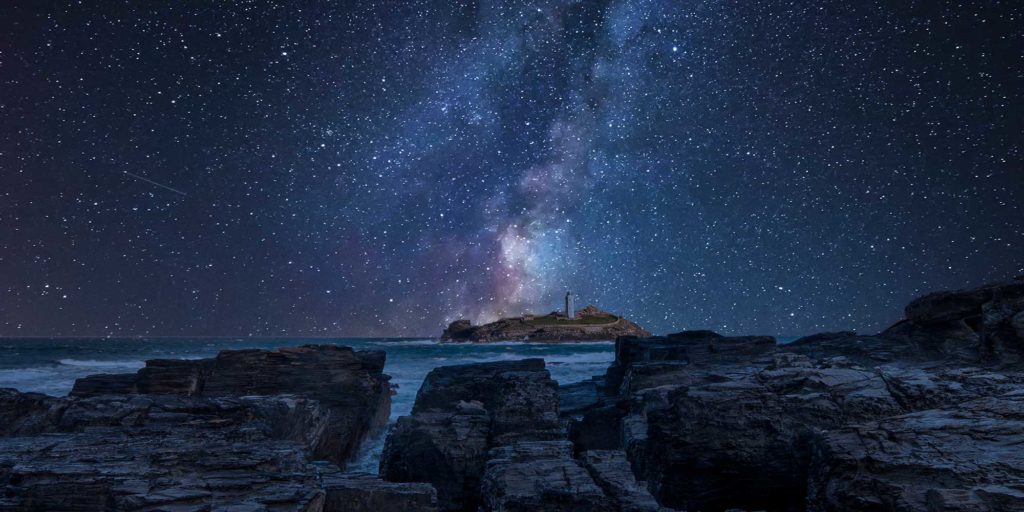
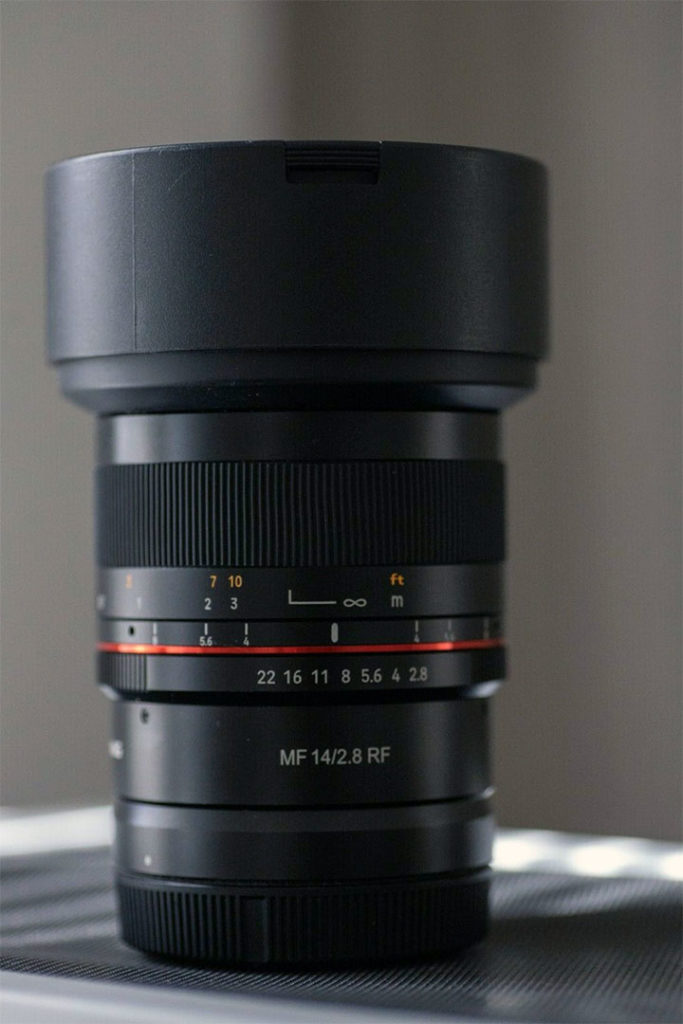
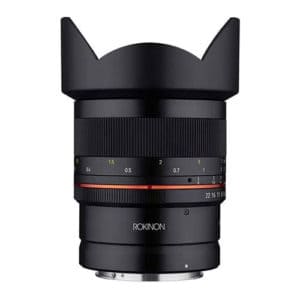
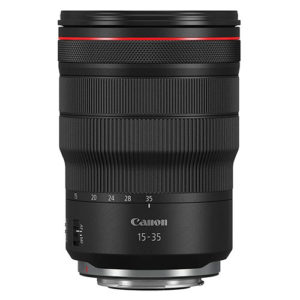
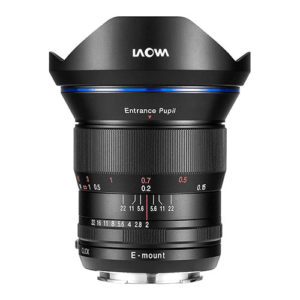
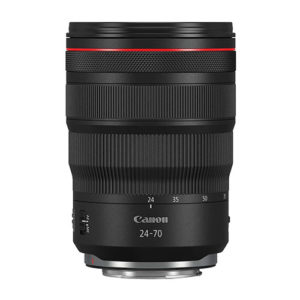

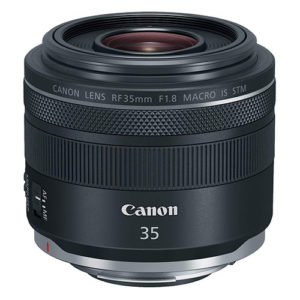
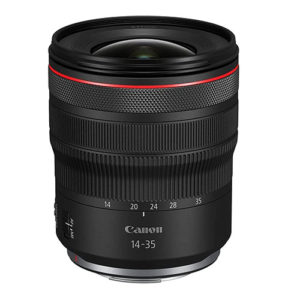
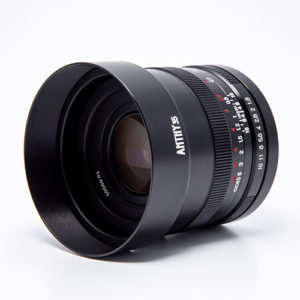


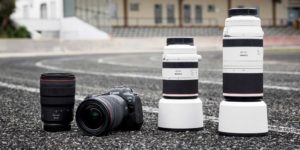

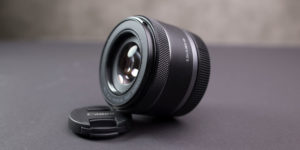
2 thoughts on “Top 8 Best Canon RF Lenses for Astrophotography”
Looks like I’ll be staying with my Rokinon 20mm f1.8 with ef to rf adapter.
Hi, really helpful article. Can I ask what your thoughts are about the Canon Rf 16mm f2.8 as a semi-budget option?